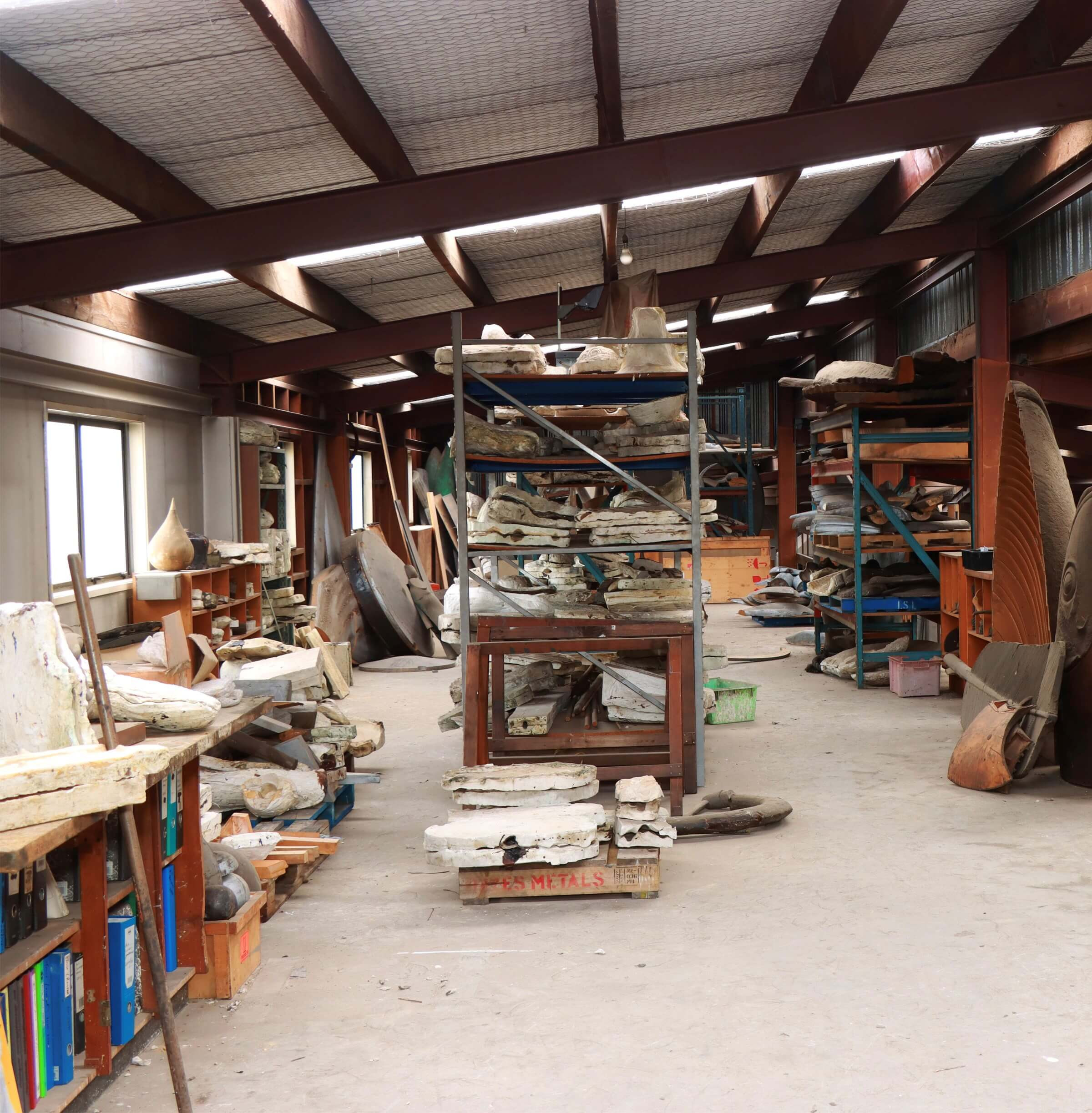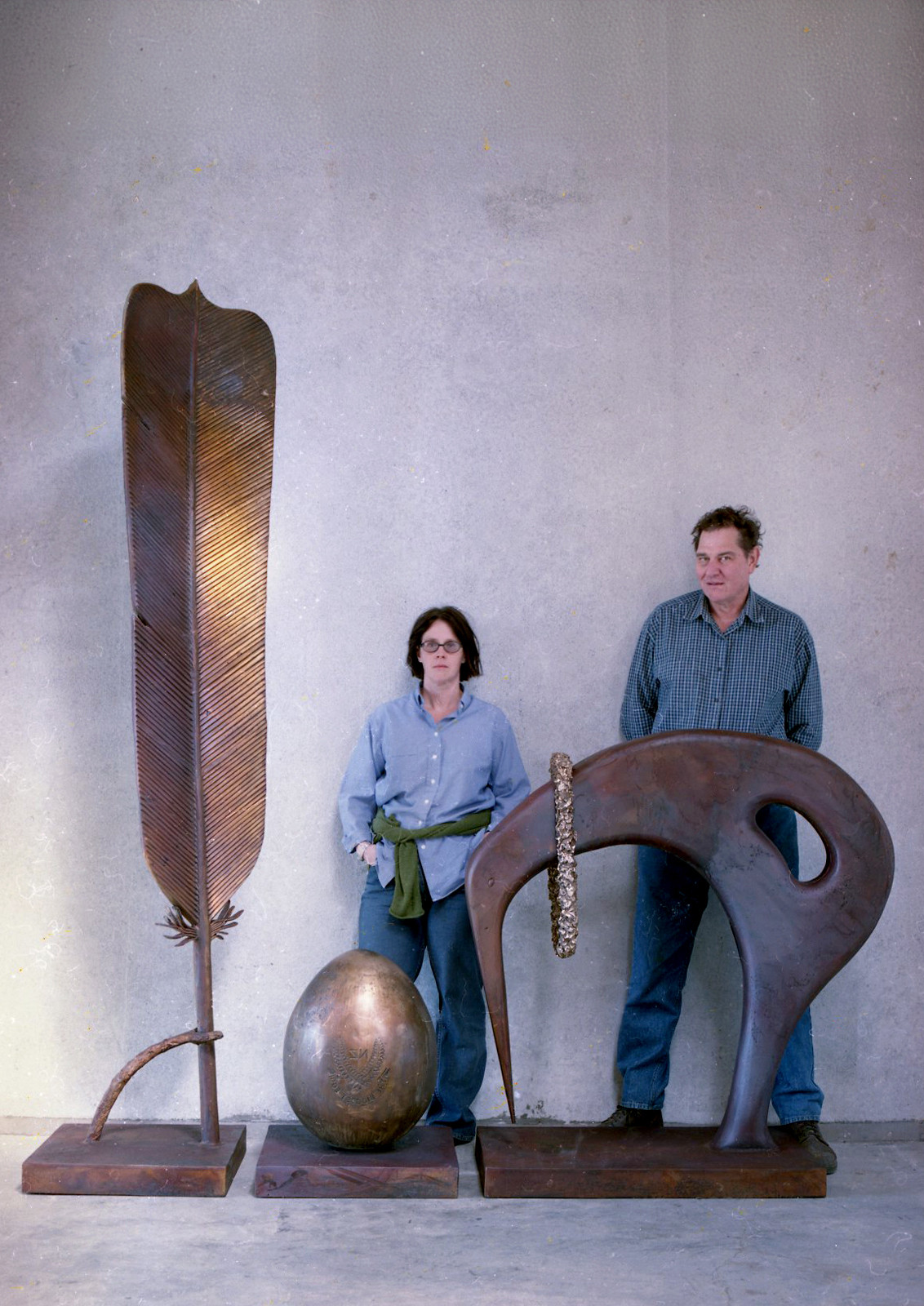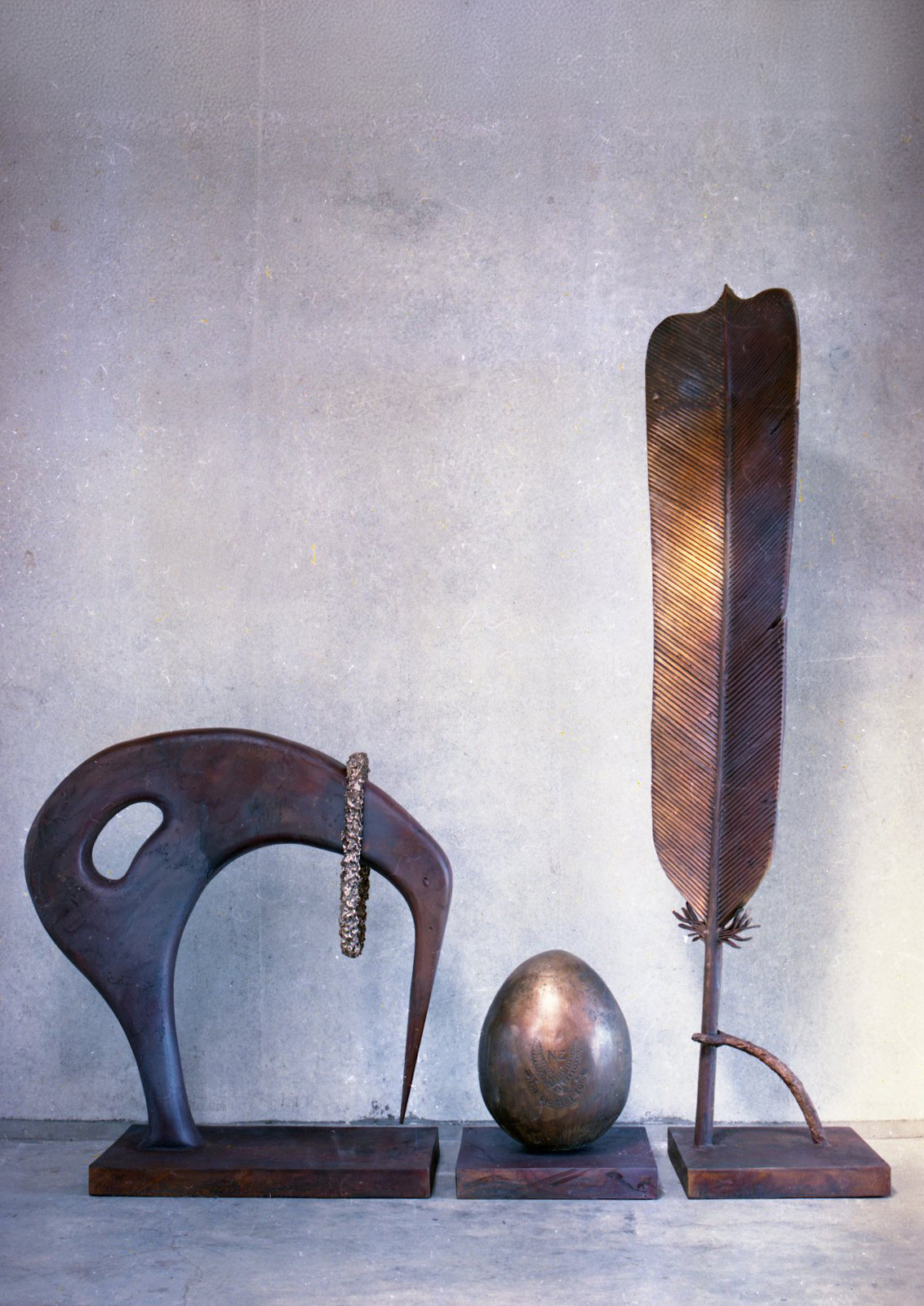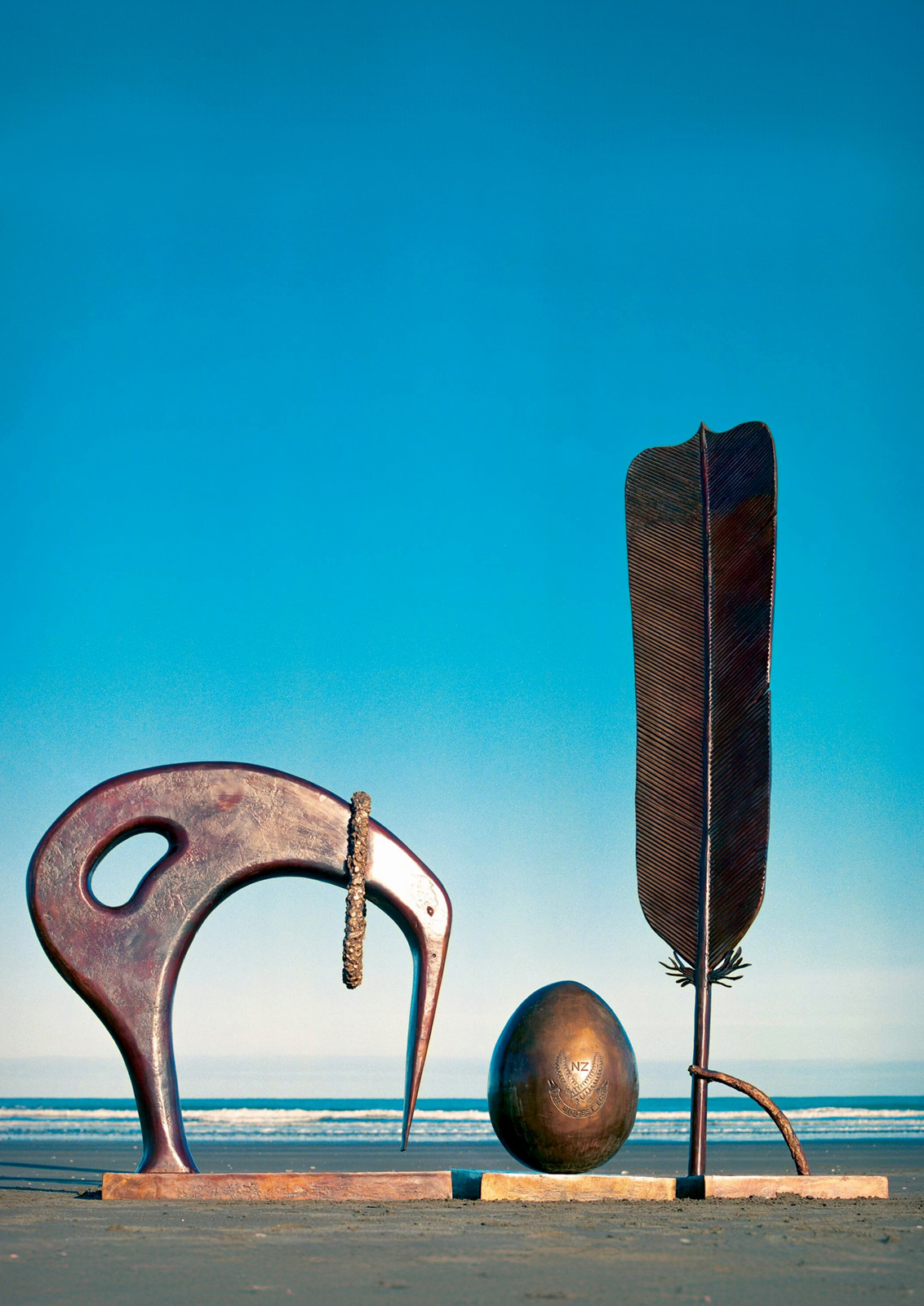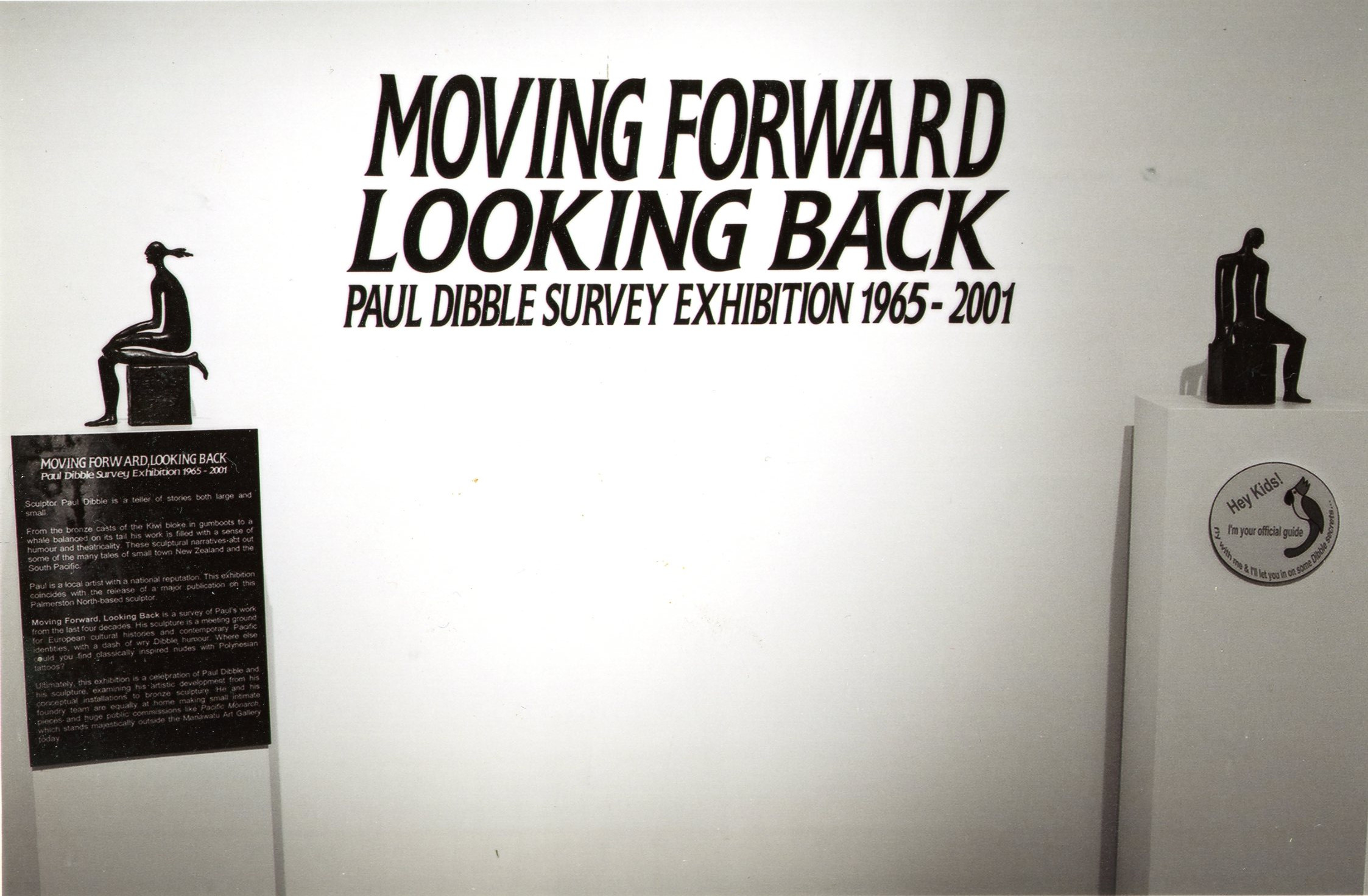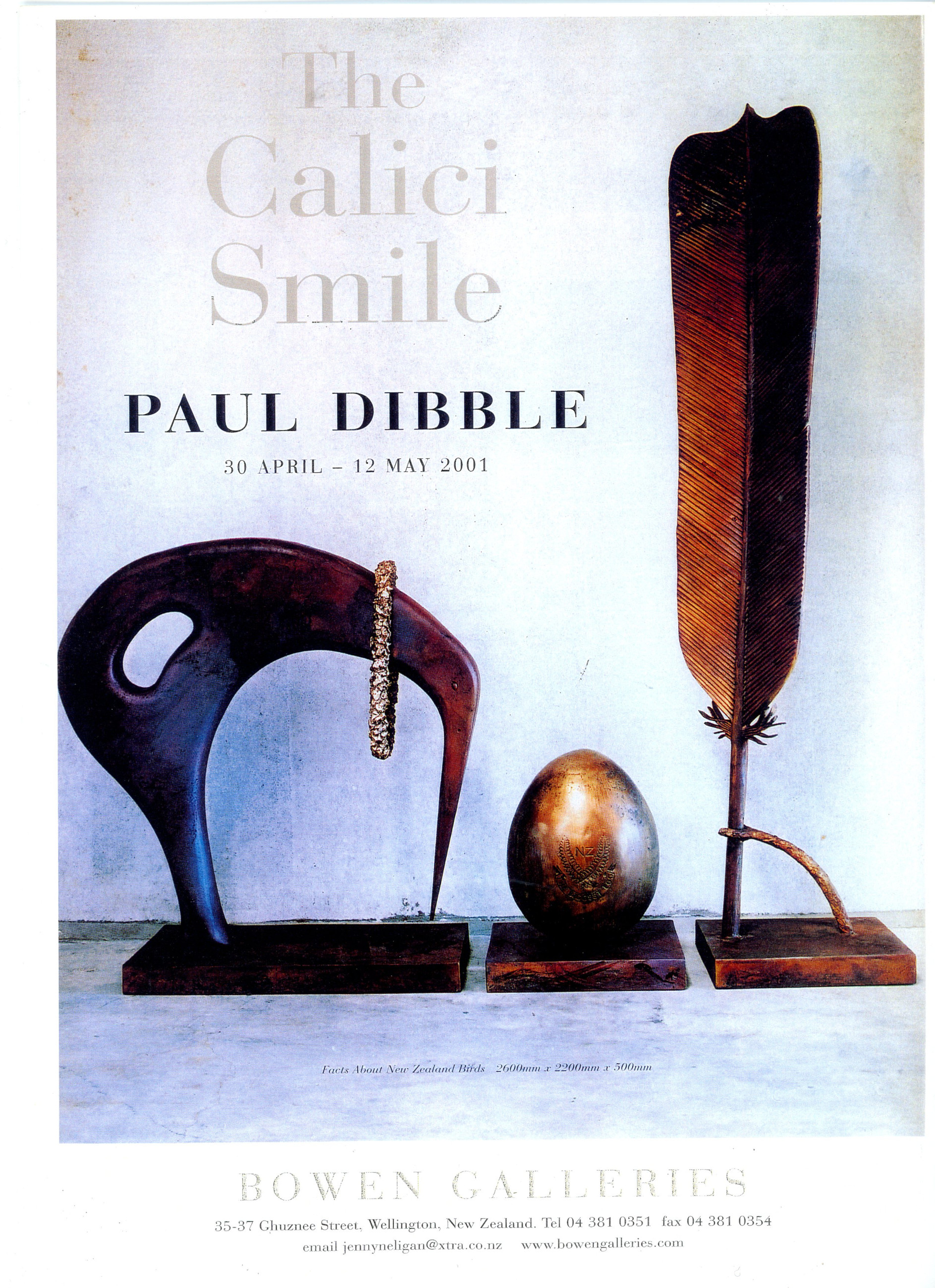2001 Facts About NZ Birds
2001 Facts About NZ BirdsBronze
2500 x 2500 x 500 mm (estimate)
2001
Single edition
Notes
In the mid-60s there was an exhibition in NZ of British sculpture. It suddenly made New Zealanders aware or what was happening in sculpture at an international level. The British show included, among others, Moore and Hepworth. Moore and Hepworth’s use of holes as negative spaces through their figurative and naturalistic forms caused a fair amount of division here at the time. Cartoonists, in particular, tended to lampoon these works, comically characterizing the ‘holes’. The effect of the show was that many of these stylistic elements found their way into NZ popular culture. In school woodwork classes these various adaptations of the simplified free forms with holes through them made their appearance. Many people today would remember them, and they often turned up in junk shops.
The large kiwi in Facts About NZ Birds picks up on these threads and brings these ideas back into consideration as sculptural form. The piece as a whole looks at quirky aspects of NZ culture. In a small country we love to lay claim to the biggest and the best, as the claim of the kiwi’s egg as biggest, per size of bird, in the world. The huia feather, though from an extinct bird, remains as a symbolic treasure for both Māori and Pakeha. (It was last sited in the area between Palmerston North and Wellington.)
